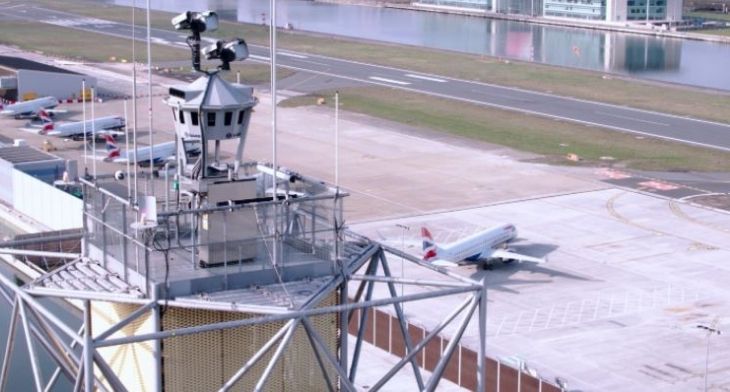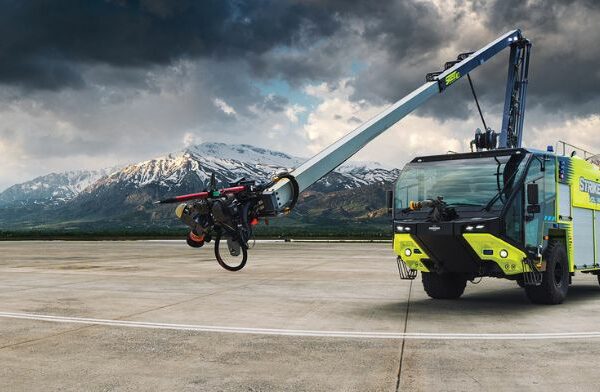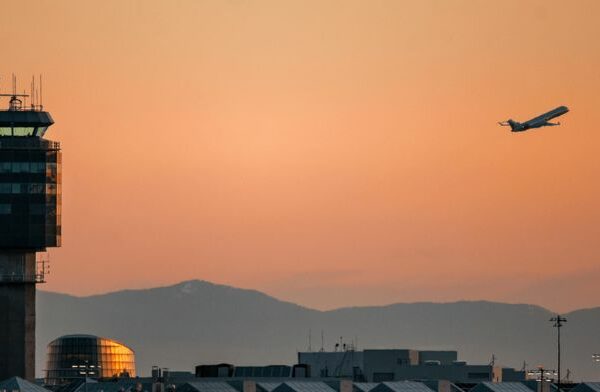


Situated in the heart of the UK capital, London City Airport (LCY) has become the world’s first major international airport to be fully controlled by a remote digital air traffic control tower. The multi-million pound investment in the revolutionary technology marks a major milestone in the airport’s investment in its future.
Pioneered by Saab Digital Air Traffic Solutions, the technology has already been successfully tried and tested at Örnsköldsvik and Sundsvall airports in Sweden. City Airport’s digital control tower was actually completed in 2019 but has since been through an extensive testing period before becoming fully operational. As a result, all flights on the airport’s summer schedule will now be guided to land or take off by air traffic controllers now based 115km away at NATS’ air traffic control (ATC) centre in Swanwick, Hampshire. Controllers will use an ‘enhanced reality’ view supplied by a sate-of-the-art 50m digital control tower located at LCY.
The unveiling of the revolutionary technology follows the completion of new aircraft stands and a full-length parallel taxiway which became operational in December 2020.
“We are immensely proud to become the first major international airport to adopt this pioneering technology,” said Alison FitzGerald, LCY’s Chief Operating Officer. The investment in smart infrastructure will help the airport meet future growth in passenger demand and improve air traffic management, as well as provide enhanced capability as aviation bounced back following the pandemic. “It is also a demonstration of the commitment to innovation in the UK aviation sector and to being at the forefront of defining the future of flight,” she added.
Meanwhile, Juliet Kennedy, Operations Director at NATs, commented: “Digital tower technology tears up a blueprint that’s remained largely unchanged for 100 years, allowing us to safely manage aircraft from almost anywhere, while providing our controllers with valuable new tools that would be impossible in a traditional control tower.”
Sixteen high-definition cameras and sensors mounted on the mast capture a 360-degree view of LCY’s airfield. This is relayed through super-fast fibre connections to a new control room in NATS’ air traffic control centre in Swanwick. A dedicated team of controllers use the live footage, an audio feed from the airfield and radar information to instruct aircraft movements in and out of the airport. The live feed is displayed on 14 HD screens in the Swanwick control room providing a panoramic image. This can be overlaid with digital data to provide an ‘enhanced reality’ view.
Information such as call signs, altitude and speed of all aircraft approaching and leaving the airport, weather readings and the ability to track moving objects can all be included in this single visual display. In addition, pan-tilt-zoom cameras can magnify images up to 30 times for close inspection.
“This is an important milestone for Saab in the implementation of remote air traffic solutions at major civil aerospace hubs with dense traffic in a complex airspace. We look forward to seeing the technology take off at London City Airport, giving controllers new tools and safety features which demonstrate the benefits Digital Towers can bring,” said Magnus Lewis-Olsson, Chairman and President of Saab UK.
Research has revealed huge pent-up demand for international travel this summer. British Airways is introducing a new route to San Sebastian, Spain, alongside popular holiday destinations including Ibiza, Mykonos and Santorini to help meet the expected surge in short-haul travel.





